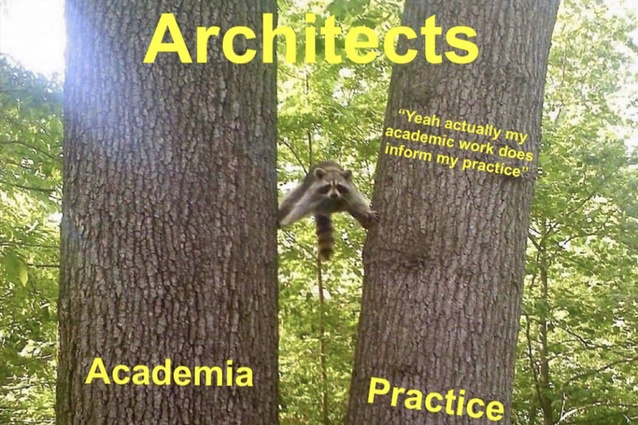Decorators for finance capital
Architectural designer Tessa Forde (BAS) (MArchProf) responds to Karamia Müller’s column ‘Before there was dank, there was Frank’, published in Architecture NZ Jan/Feb 2023 and also here on ArchitectureNow.
Kia ora Karamia,
I hope you are doing well. It was great to read your piece about Dank.Lloyd.Wright - the more exposure they get the better in my opinion.
In the old days this would have been a letter to the editor, but of course, as you so rightly point out, there are few platforms for critique and discourse in architecture Aotearoa. I think it will also a little bit have the tone of a letter to the editor - so just to preface I typically thoroughly enjoy your writing and think it is well positioned, researched and stated.
“Decorators for finance capital” is not a claim that architecture is interior design. Interior designers could also be called ‘decorators for finance capital’, but this claim is much more about the role that architects play in relation to capitalism. Most of our work is directly driven by the market, the majority of our work is literally creating interiors (of course), exteriors, public spaces, privately owned public spaces, and landscapes on the basis of cost analysis and efficiency spreadsheets created to minimise $/m2 out and maximise $/m2 in. The majority of our work in Aotearoa is to do this for the wealthiest New Zealander’s private 1st, 2nd, 3rd, homes. We now operate under the reality that form follows finance and most of our design decisions are limited to whatever aesthetic trend is deemed most valuable, or least offensive by the market and the dominant class. You might enjoy this vice art project about billionaire real estate in NY.
This might seem cynical, and it’s not how I want to practice architecture, but this is the reality that DLW are pointing to. There is a reason we have to fight so hard for our supposed relevance to society - to most of society we are actually completely irrelevant, lackeys to the rich - and those rare cases that ARE doing things differently are rarely celebrated in the profession unless there is a capital benefit to doing so (and because we have turned social good into a cultural currency we are seeing this more and more). The point is that the discourse is much deeper than conflating architecture with interior design. It is a much broader critique on our complicity in oppressive power systems and the flows and hoardings of capital. Sacré bleu indeed.
I agree that the discourse of DLW can be difficult to penetrate, there are a lot of in-jokes that extend back years in some cases, but I did think that attributing the opacity of the content to its form and the age of its creators was an easy out. “I used to draw with pen and paper” is the kind of tired trope used by white men in generations above us to invalidate and critically devalue (often on financial terms) the skill set and modes of thinking of younger generations. These skillsets and modes of thinking are usually a direct result of technological development and culture that the older generation created, or they are skills created in resistance to the dominant culture, and that they now depend on to run their finance capital decoration businesses (from revit to contemporary community engagement).
Based on previous postings and the occasional admission from DLW in the comments, most of the admins of DLW are Millenials - and over 30. One admin is at least 35. Obviously this information is hard to glean from their page without a SERIOUS deep dive, but the meme format that they use would be considered outdated to most GenZs and is far more rooted in early meme discourse and development. These are practicing architects using this platform as an outlet and coping mechanism for their feelings of disappointment and frustration with the discipline. There’s a great interview with them and Dezeen about this here.
Anyway, I know how much work must go into writing these pieces and I appreciate what a beast DLW is to wrangle into 1000 words, but I think it is a super important space that is really radicalising a lot of students and young graduates and deserves to be taken seriously.
It would be great to catch up sometime and talk about all of this more, and I would love to hear what you are up to.
I’ve been running the Night School and pre:fab, who will be campaigning to be the next president of the NZIA.
Thanks for starting so many great conversations through your platform. It’s a super important task.
Karamia Müller’s column from Architecture NZ Jan/Feb 2023 can be read here.














